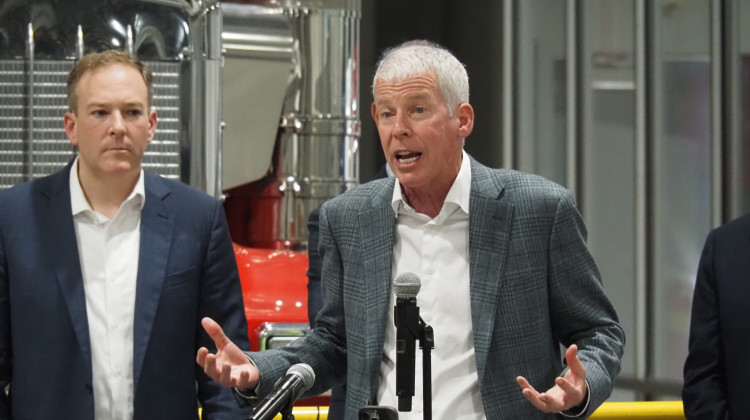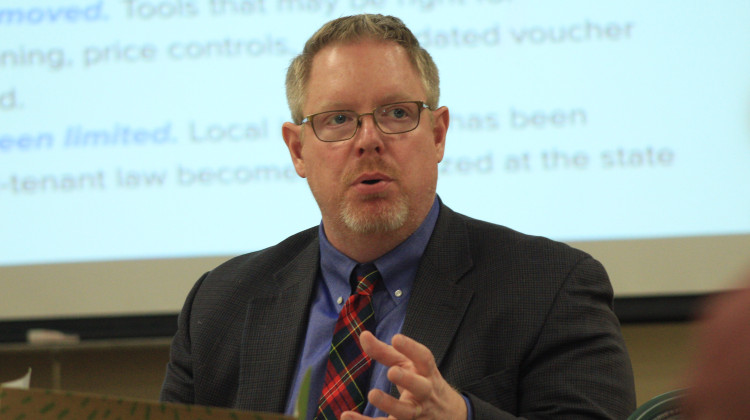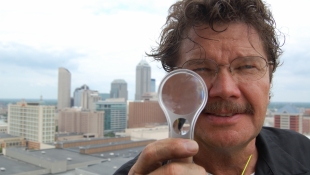
Starting Aug. 28, a new rule will go into effect clarifying the agency can also regulate tributaries and defines those tributaries as any waterway that has a bed, bank and high water mark — a mark on the bank where erosion is visible.
USDAIn Marshall County in northern Indiana, a bridge overlooks a small, peaceful river. Corn grows a few yards away from the river’s banks. The path of the river winds under large trees that bend inward, forming a kind of protective covering.
This seemingly idyllic scene is becoming a big headache for farmer Charlie Houin.
“This is the Yellow River,” Houin says as he stands on the bridge looking out at the water. “All of our ditches pour into this river at some point in time.”
The EPA has regulated navigable waterways since the Clean Water Act went into effect in 1972.
Starting Aug. 28, a new rule will go into effect clarifying the agency can also regulate tributaries and defines those tributaries as any waterway that has a bed, bank and high water mark — a mark on the bank where erosion is visible.
That designation means Houin will likely have to get a permit for more than a dozen other ditches on his property that connect to the Yellow River.
‘Lack Of Clarity’
At a signing ceremony on the banks of the Anacostia River in Washington D.C., the head of the EPA, Gina McCarthy, said the new rules will protect not only the public’s health but business too.
“From manufacturing to agriculture, major sectors of our economy depend on our water to function and to flourish,” McCarthy said.
The Indiana Farm Bureau is fighting the policy, saying the rules are too broad.
“The lack of clarity is really concerning to us,” says Kyle Cline, the Indiana Farm Bureau’s national policy adviser. “For many normal farming practices and land practices that have never been required to have a permit, they would be required to have a permit. That would require significant costs, significant regulatory compliance and paperwork, and the average farmer does not have the time or the resources to do that.”
The Farm Bureau is hoping Congress will pass a new law limiting the EPA’s authority and stopping the water regulations from going into effect.
It’s more likely that will be decided in court.
Indiana and 11 other states have filed a lawsuit seeking to stop the EPA.
The Indiana Attorney General argues the agency has “greatly overstepped its bounds by intruding into an area of state environmental jurisdiction with a rule that is impractical, potentially harmful to Indiana’s agricultural economy and costly to taxpayers.”
A Sparring Over EPA Authority
Environmentalists do not agree.
“I’m really confused by that argument,” says Hoosier Environmental Council attorney Kim Ferraro.
She says a previous court decision has upheld the EPA’s broad authority to regulate waterways and even asked the EPA to clarify its definition, which is what it seeks to do in the new rules.
“[The EPA's authority] was recognized to extend to tributaries, that has never been the question. The question is, how do you determine what those waterways are. The EPA looked at the science behind that,” Ferraro says.
EPA officials say they’re allowing exemptions for farming. The key is that while that will apply for many farming practices such as plowing, it might not apply to fertilizer runoff, which the EPA considers the largest contributor to water pollution.
Charlie Houin says to prevent fertilizer runoff, he and the other farmers take extra precautions, including precision farming.
That technology comes in the form of a GPS in his tractors that allows him to apply the exact amount of fertilizer needed on each inch of land.
“When I see a dust storm coming over our fields in the spring time, thinking ‘Oh goodness, there goes my fertilizer.’ I like to keep my money in my own fields,” Houin says, laughing. “So I’d like it to stay here.”
Houin says if he has to apply for EPA permits later this month, he will, but wants EPA officials to know, he’s invested in the land and, in turn, the environment.
“My kids drink the same water that we put on the fields. That’s something that’s very personal to me,” he says. “I want clean drinking water too, just like the next person, especially when you’re talking about multi-generational farming. You want to see the next generation come in and preserve the ground like you preserved it.”
 DONATE
DONATE





 View More Programs
View More Programs

 Support WFYI. We can't do it without you.
Support WFYI. We can't do it without you.